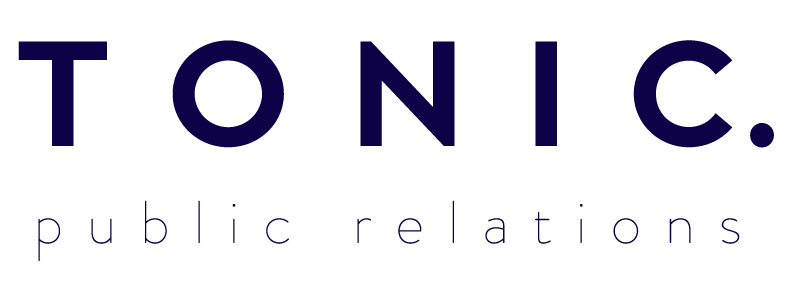By Natasha McGarrell
Scratching your head over how to reach your digital audience? Never fear, Tonic is here. The team recently attended a digital marketing bootcamp and we’ve got the skinny on how you can create a kick-arse digital marketing campaign.
Before anything else, you’ll want to establish your business objectives and what you hope to achieve with a digital campaign. Once you’ve done this, have a think about what method you’ll use. Web, social and email are three great ways to implement your digital campaign. Here’s the lowdown on how to do these well.
Web
Your website will more than likely underpin all the campaigns and communication you do, so it’s safe to say it’s pretty damn important. The design of your website should come down to one thing: user experience. A good website does what users need, does it well and looks good while doing it.
While developing or improving your website, ask yourself:
- Is it easy to use?
- Does it look good?
- Is it on brand?
- Can users find the right info and perform the right action easily?
A great way to test this is to perform A/B testing. Do this by changing one aspect of a page, like the headline, call to action or image, and see if it performs better in Google Analytics. Or even your family and friends. Good websites require continual improvement, so keep testing to see what works for your customers.
How people find your website is also big player in digital marketing. Check out our guide to SEO here.
Social
If done right, social media can be a dynamite digital marketing tool. 59% of people access social media every day or most days, while a third check social media over five times a day[1]. People are on social, but what’s the best way to reach them?
Unfortunately, there’s no cookie cutter answer. Each brand is different, so take the time to consider which channels are right for your business objectives. Similarly, there’s no answer to when and how often you should post. While there are some great guides out there to get you started, the best thing to do is to test, test, test.
There are three elements to social media content: paid, owned and earned. Let’s take a closer look.
Paid Social
It’s estimated that only 2.6% of your audience will see your organic (non-paid) content[2]. We know what you’re thinking: “HOLY COW, THAT’S TINY!”. To get your content seen these days, you have to pay to play. That’s where paid social comes in.
Paid social encompasses ads and sponsored posts. Most major social platforms now have advertising tools with complex targeting tools that allow marketers to target granular demographics. Something to consider is that audiences on social media are low intent – meaning they’re not looking for your ads and may not be super keen to buy your product. This is where a killer content marketing strategy is handy. Instead of publishing an ad that looks like an ad, try sharing something valuable to your audience, such as an interesting blog post or special discount.
You can learn more about how social ads increase brand reach and revenue here.
Owned Social
Owned social is exactly how it sounds. It’s the social elements that you own like your account, page and content. If you haven’t already, whip your social pages into shape by adding cover and profile photos, correcting contact details and posting fun and engaging content.
Earned Social
User-generated content (UGC), or earned social is a great way to build and engage your community. Shares, mentions, reviews and fan photos all live under the UGC umbrella. How you leverage this type of content is hugely important for your brand. User-generated photos can be a great way to beef up your content plan with little to no effort on your end. Monitor your fans’ social actions to establish “power fans” with an undying brand loyalty, and engage with them. These people are some of your biggest brand advocates, so work with them!
Working with negative UGC can be a little trickier. Maintain a positive brand reputation by responding to all negative reviews and comments. Showing that you’re committed to giving your customers a good experience will go a long way.
Email
Being 45 years old, email is a dinosaur in digital marketing. Because of this, you may be tempted to ditch email from your marketing strategy. Here’s why you probably shouldn’t: email is 40X more effective at acquiring customers and has a 17% higher conversion rate than Twitter and Facebook. Wowzah.
Before you start sending out a bunch of content, you’ll need to build a database of emails. You might be inclined to buy email lists off a third party. My advice: DON’T. Bought lists can be low quality and the fact of the matter is that you can’t be certain how the addresses were collected. While it may take a little extra elbow grease, building a list of people who genuinely want to receive your emails is worth it. Here’s a great guide to gaining email subscribers.
Once you’ve built your list, think about what type of content you’d like to distribute. There are three types of emails you can send:
- Newsletters and ad hoc: emails manually sent as one-off events, though they may be distributed regularly. E.g. limited time sale/event, news roundup, new content announcement
- Transactional/real–time: triggered by user action/inaction. E.g. order confirmation, welcome email, password reset
- Behavioural/profile–based: powerful automated way to target segments of users. E.g. birthday offers, abandoned purchase, reactivation campaigns
Finally, make sure you follow the number one rule of email marketing: don’t be spammy. Your customers will thank you for it.
[1] Source: Sensis Social Media Report, 2017
[2] Source: Locowise Facebook Reach Report, 2015

